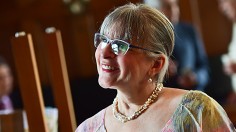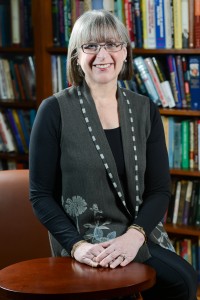
by Karen Gross
Let’s start with the facts. A few months ago, I had rotator cuff surgery—three torn tendons from a fall on ice in Vermont. When people ask how the injury happened, my standard answer is/was “not gracefully.” My surgeon (after visiting several others) was and still is Dr. Jonas Rudzki, and my physical therapist was and still is Holly Kreisle at Washington Orthopaedics & Sports Medicine.
While I want to share what I learned from this experience (mentally and physically) in terms of quality medical care I received pre-op, during surgery, and post-op, I want to be very clear: rotator cuff surgery is a choice of last—not first—resort. It is not for the faint of heart. So anything and everything one can legitimately do to avoid surgery (interestingly, both my physician and PT take the same position) should be done.
If surgery is the only remaining viable option, then there’s much to gain—in addition to a fixed shoulder.
One more caveat, before turning to the lessons learned. I am, I admit, a terrible patient. For starters, I am not patient (as in not willing to wait). I want to see results, and I figure if I work harder, faster, and longer, things will improve. I consult the Internet and friends and keep coming up with suggestions that I think will hasten and improve my recovery. Following surgery, you need to work hard in PT but the truth is that healing tendons to bone isn’t a speedy process. No amount of willpower, effort, or mental determination will make nature speed up. That was hard for me to believe. In short, there’s a pretty standard timetable for healing (give or take a week or two on either side) and that’s just how it is. That means patience is not just a virtue; it’s a necessity.
That said, here’s my “who knew” list:
I had no idea how much “physical” planning was needed and beneficial for rotator cuff surgery—both from Holly and from a trainer at the gym I use in DC. Notwithstanding the injury, Holly made sure my injured shoulder was “surgery-ready” by strengthening the muscles around it. And she was careful not to aggravate the existing injury. She did such a good job that I asked if I could cancel surgery because my shoulder felt so good. Answer: with three torn tendons, no (unless you want an artificial shoulder in short order).
The trainer at the gym made me do weeks of exercise with my to-be-operated-on arm glued to my body so I had to manage without it. Apparently, surgery on your dominant side (or perhaps any side) leaves you imbalanced. You can easily walk into walls or misjudge how much space exists between you and another object or person. My trainer had me get up from chairs and stools with only one arm, and she also had me get up from the floor. It wasn’t pretty. And she made me practice brushing my teeth with one hand, among other tasks.
Who knew how beneficial all these pre-op efforts would be?
I did a fair amount of pre-surgical shopping, not exactly glamorous shopping but in retrospect, beneficial purchases. I got cosmetic items that came out from a pump and I got a pill distributer so I did not need to open bottles (yes, my husband still had to help). I got a blow dryer with a brush attached (one handed hair blowing is impossible). I sorted through jewelry I could put on with one hand—earrings with no backs, bracelets (and a watch) on stretchy elastic or metal bands, and necklaces that were long enough to slip over my head. I even got an inexpensive wedding band (as in $3.99) because my own rings did not fit due to swelling.
Now some of my purchases turned out to be serious flops. I ordered several shirts with Velcro shoulder openings, but the Velcro, if not perfectly aligned, was itchy and scratchy. Bad choice. Optimism misplaced. I got a neck rest for sleeping, but wearing it made me hot and I felt like I was in a vice. And it was a hideous pink.
Who knew that thinking ahead about life with only use of one arm could lead to novel solutions?
The actual surgery was as one would expect, but the surgical center was way better than I anticipated. Not only was it clean, private, and uncrowded but those who worked there operated well as a team. Everyone knew his or her role and I was especially grateful for the way the medical professionals listened and responded to my concerns.
As for the pain: it kicked in (exactly as I was told) when the numbing block kicked off. The warning from the medical team was clear: stay ahead of the pain, a phrase that until then had little meaning for me. I now get it and it is totally counter-intuitive: you take medication even if you do not yet feel pain. If you wait for the pain, it is sort of too late because the painkillers don’t work all that fast.
It also came as a surprise that water plays a role in arthroscopic surgery. Apparently, they infuse the surgical site with gallons of water (obviously not all at once). But there are two consequences to this (not to be too graphic for readers): one is that your arm swells (which it would do even without the water, I suppose), and the water needs to exit the body, so one is peeing a fair amount. I actually thought I might have some sort of condition unrelated to shoulder surgery!
And one more strange phenomenon: pain is not necessarily in the spot where the surgery actually occurred (as in the shoulder). The shoulder, at least in my case, was fine but the bicep and triceps felt as though they were the surgical sites. Thankfully, you can see, email, and call the surgeon, his staff, and the physical therapist to make sure that what you suspect is abnormal is perfectly normal.
Who knew about taking pills “early,” the role of water, and referred pain?
This surgery was not my first rodeo, but I have to say that this experience showcased personal, individualized care in ways that left me thankful, grateful, and deeply surprised. From the surgeon to the physical therapist, they cared and they listened. When I commented on my sling hurting my skin, they immediately suggested I come in and decided I was allergic to the particular fabric. It is not as if I had underwater diving experience and had worn neoprene. I once asked about a particular bone-healing machine I had used in the past and whether it could help my current situation and the team did research while I waited. And when I wrote a haiku to the doctor before I saw him the third time (about my concern that while I may have looked okay on the outside but I didn’t feel well), he not only called me at the crack of dawn, but also wrote me a corresponding haiku about understanding how I actually felt.
Who knew that medical care could still be so personalized?
I am not a “group” kind of person. I like to exercise alone. I prefer yoga alone, although restorative yoga in a group has benefits. I like small parties, not massive gatherings. I like privacy in my personal life. But with physical therapy, which occurs in a large room with numerous stations and many patients, I was not only comfortable but the whole experience felt like a support group. People shared their progress (and their setbacks); I still remember the fellow who strained his surgically repaired shoulder taking dishes out of the dishwasher and putting them on a high shelf for his wife. We monitored each other’s progress and yes, there was a wee bit of competition (“You can do that? I can’t. Is there something wrong here?”).
But, here is the stunning part: the physical therapy was individualized despite the myriad of patients being treated. Each patient had a slightly different routine, depending on his or her stage, age, and particular surgical repair and progress. Different strategies worked for different people. It was remarkable not to feel like one size fits all. In short, rotator cuff surgery is not identical for all patients.
Who knew that group therapy works on more than your arm? It works on your head too.
And on a very personal note, who knew that patience (or at least a healthy respect for patience) could be learned by a patient? In short, as we approach the holiday season and new year, I received a remarkable set of gifts from a surgeon and his team. I have a repaired shoulder, but I also received much more than that.
Want to know more?
For more information about rotator cuff surgery, email us or request an appointment.
Be sure to follow us on Facebook and Twitter as well!
Who knew?
 Karen Gross is a WOSM patient and senior counsel at Widmeyer Communications. She is an author, educational advisor, and former college president.
Karen Gross is a WOSM patient and senior counsel at Widmeyer Communications. She is an author, educational advisor, and former college president.
